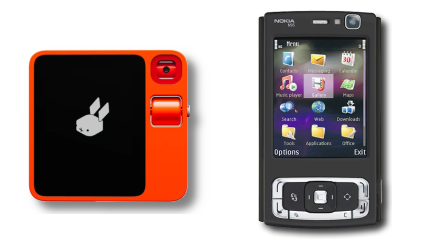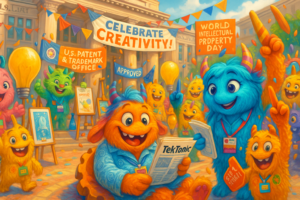The recent launch of the Rabbit R1 reminds me of an earlier era in tech, reminiscent of the period following the dot-com boom, known as the beginning of Web 2.0. This was when now-giant companies like Facebook, YouTube, and Y-Combinator were in their infancy, and Twitter and Uber had not yet entered the scene. During this period, Nokia was a leader in the mobile phone industry, discussions about AI were dominated by expert systems, and multimedia was still a tech term. Popular YouTubers like MKBHD was in his early teens, and Apple was evolving from a company known primarily for its computers and the iPod to a larger consumer electronics and lifestyle conglomerate.
Such a disruptive era has reemerged but with different players. The Nokia N95 was the first widely available “multimedia” telecommunication device, selling nearly 7 million units in its first year (2007). Contrast that with the newly released Rabbit R1, the first widely available AI device that sold over 100,000 (in 1 month). Remember that in 2007, Nokia had over 110,000 employees, while Rabbit employs only 17.
Despite these differences, closer comparisons can be made regarding their innovative nature within their respective technological eras. Both the Rabbit R1 and the Nokia N95 are noted for pushing the boundaries of what was expected from devices in their categories at the time of their release. The N95 was the first phone to include features like a 5-megapixel camera, built-in GPS, and web browser, setting the standard for future (smart) phones, an as-yet-to-be-defined product category. Similarly, the Rabbit R1 introduces unique features, such as its ability to interact with various applications through its Large Action Model (LAM), allowing users to perform tasks like ordering food or hailing rides, and its dedicated LLM.
The Nokia N95 was criticized for its physical design, particularly the dual-slider mechanism that could be prone to wear and accidental activation, and its relatively bulky size. The Rabbit R1, while praised for its cool hardware design, faces similar usability issues, particularly its software, which needs to be fully functional and efficient in performing the tasks it is designed to do. The same sort of software criticisms plagued the Nokia N95.
The N95 was aimed at tech-savvy users looking for a device that could handle multiple advanced functions like high-quality photography and GPS navigation, which were quite advanced for its time. The Rabbit R1 targets a similar tech-enthusiast market, those interested in the latest gadgetry and integrated GenAI.
The Nokia N95 played a significant role in the evolution of mobile technology, demonstrating the potential of smartphones beyond just communication devices to multifunctional tools that can handle various forms of media and data. The Rabbit R1, despite its shortcomings, represents a similar step towards a more integrated and interactive smart devices ecosystem, setting the stage for a future where we seamlessly interact with the digital world. Rabbit R1 aims to provide a low-cost mobile agentic AI that acts on our behalf.
The public’s mixed reactions to the Rabbit R1 device echo the skepticism shown towards the Nokia N95. A common question arises: why do new companies introduce new gadgets that seem unnecessary when existing devices can perform similar functions? The answer often lies in progress and the human resistance to change. While technological advances can be challenging to embrace, they are essential for progress. However, there’s a tension in the tech industry, as established players like Apple and Google may resist changes that could disrupt their well-entrenched systems, which are optimized to generate substantial profits. This ecosystem is designed to benefit these incumbents rather than the consumers, suggesting that aligning corporate innovations with genuine user needs might be the actual challenge.
The late Dr. Christensen articulated this critical concept that resonates in the tech industry: market leaders often fail to recognize disruptive innovation because they minimize the threat of these new technologies and refuse to acknowledge it (exemplified by Google and Apple’s lethargic response to ChatGPT’s introduction). They focus intensely on their current customers’ needs, improving products incrementally rather than innovatively addressing the underserved segments of the market.
If the trends hold and history serves as our guide, smart AI devices like the Rabbit R1 may become the standard in personal technology over the next decade. This story serves as a cautionary tale: once confident in its market dominance, Nokia was overtaken by more disruptive innovations like the iPhone. The question is whether Apple, a current leader in the tech industry, will heed the lessons from Nokia’s decline or risk a similar fate.
Human nature often resists change and tends to view new developments through the lens of what is familiar, known as the ‘normalcy’ bias. However, with the relentless pace of AI advancements, we must challenge these instincts. Overcoming this hurdle is essential to readying ourselves for the transformative future that is swiftly approaching. By embracing change rather than recoiling, we can unlock the full potential of innovations that promise to reshape our world in the near future.



